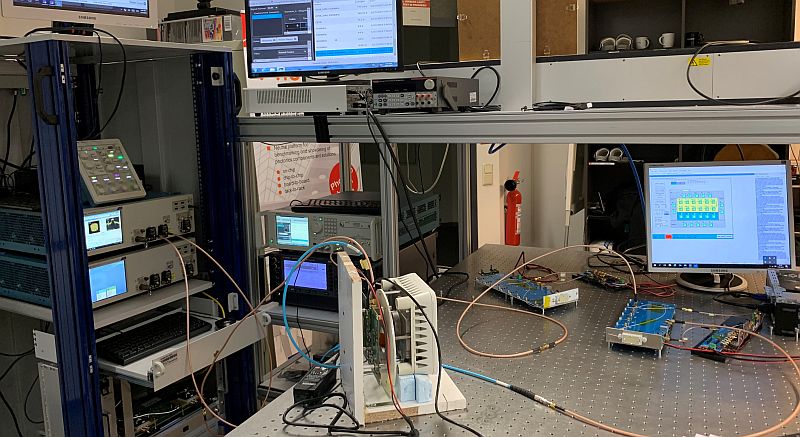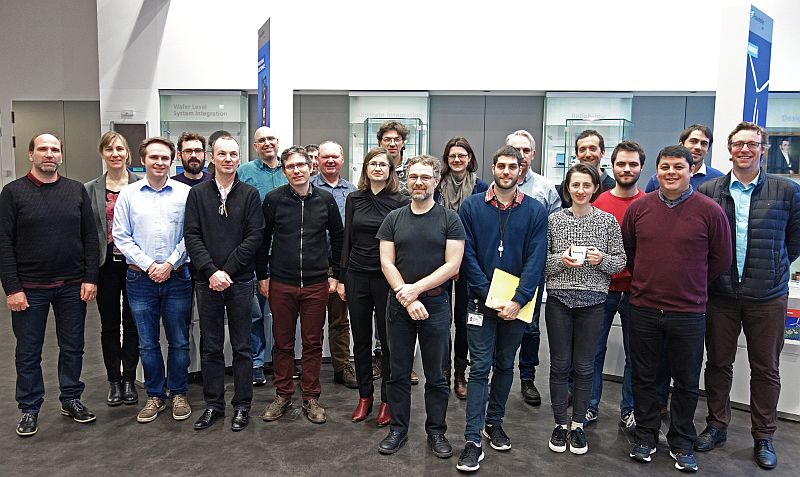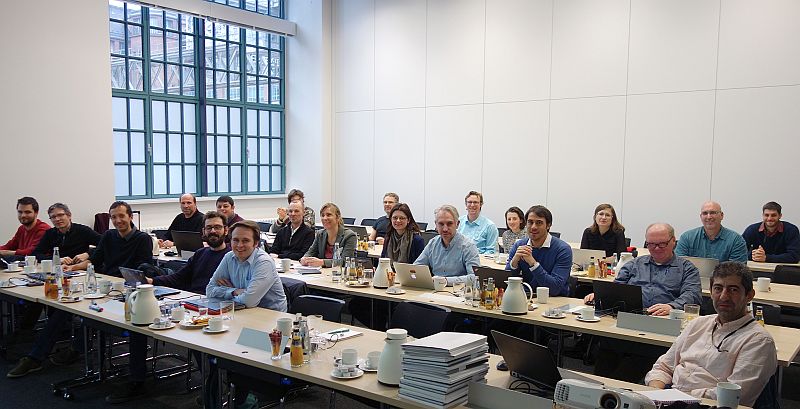Halftime at 5G-PHOS: Project Meet-Up and Live Demonstration at Fraunhofer IZM



15 representatives from 8 countries, 5 universities, 7 companies, 2 telecom operators, and 1 football squad – the Fraunhofer Institute for Reliability and Microintegration opened its doors on 24 and 25 January to a diverse group of visitors. They assembled at the Fraunhofer IZM for a milestone review in their EU research project started in September 2017. One particular highlight of the proceedings was a demonstration of the shared results achieved so far on the project.
5G is expected to have a far greater impact on Europe’s people than today’s mobile communications technology. It promises to deliver broadband connections at capacities never yet achieved within the span of a decade and reduce the costs for the consumer at the same time. This has the potential to finally make good on such visions for the future as driverless cars, Industrie 4.0, and the Internet of Things.
The 5G-PHOS project is dedicated to resource efficiency in 5G transmissions. It works to curtail the radial spread of high frequency beams around the transmitting antenna, using large-scale MIMO antennas to zero the transmission in directly on the receiver. The practical feasibility of the approach was one of the three highlight demonstrations in January. Photonic systems are used for data transmissions up to the antennas and for beam-steering by signal delays en route to the individual elements of the MIMO antenna. Projected to last for three years, the EU project is being coordinated by the Aristotle University of Thessaloniki. 5G-PHOS develops and uses integrated optical means to promote convergence between fiber-wireless technology (FiWi) and pave the way for cost and energy-efficient 5G network solutions for high-density use cases. More information about the project is available at: http://www.5g-phos.eu.
Last modified:
 Fraunhofer Institute for Reliability and Microintegration IZM
Fraunhofer Institute for Reliability and Microintegration IZM